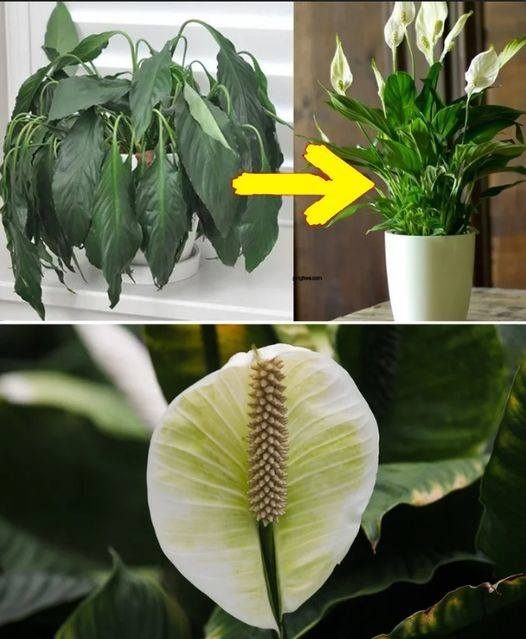ADVERTISEMENT
Place a Tablespoon on Any Plant at Home: What to Expect
Taking care of plants can be an incredibly rewarding hobby, but it can also be a little daunting at times. From ensuring they receive the right amount of sunlight to making sure they get enough water and nutrients, there’s a lot to think about. However, there’s a simple, often overlooked tip that could make a huge difference in your plants’ health: placing a tablespoon of a specific ingredient on your plants.
What’s the secret? You might be surprised to learn that this one simple step can help improve your plant’s growth, health, and overall vitality. In this article, we’ll explore what happens when you place a tablespoon of a common ingredient—Epsom salt—on your plants and the amazing benefits it offers.
Why Epsom Salt Works Wonders for Plants
Epsom salt is a type of magnesium sulfate, made up of magnesium, sulfur, and oxygen. These are essential minerals that plants need to thrive. While magnesium is crucial for photosynthesis and the overall health of the plant, sulfur helps with the formation of proteins and enzymes, making it an important nutrient for growth and flower production. Here’s how adding a tablespoon of Epsom salt to your plants can help:
1. Promotes Stronger and Healthier Growth
Magnesium, one of the key components in Epsom salt, is essential for plants to carry out photosynthesis. This process allows plants to create food from sunlight, and magnesium plays a crucial role in this process. When you add a tablespoon of Epsom salt to the soil, the magnesium helps to improve the plant’s ability to produce chlorophyll, which leads to more vibrant, green leaves and stronger growth overall.
2. Enhances Flowering and Fruiting
One of the most exciting benefits of using Epsom salt on your plants is that it can lead to more flowers and fruit. The sulfur in Epsom salt helps plants produce important proteins and enzymes, which in turn encourage better flower and fruit production. If you have fruit-bearing plants or flowering plants, adding Epsom salt can lead to bigger blooms and healthier fruit, which can make your garden or indoor plants more fruitful.
3. Improves Nutrient Absorption
Epsom salt is also believed to help plants absorb other key nutrients like nitrogen, phosphorus, and potassium. By improving the overall nutrient uptake, Epsom salt can contribute to healthier soil and plants that are better equipped to deal with various stressors such as pests or drought.
4. Helps Prevent Magnesium Deficiency
Many plants suffer from magnesium deficiency, which can manifest as yellowing leaves or poor growth. Magnesium is essential for the proper functioning of a plant’s chlorophyll, and without it, the plant cannot efficiently produce the energy it needs. By adding a tablespoon of Epsom salt, you provide the plant with the magnesium it needs to stay healthy.
How to Use Epsom Salt on Your Plants
Now that you know the benefits, you may be wondering how to incorporate Epsom salt into your plant care routine. Here are a few simple ways to use it effectively:
1. Add to the Soil
- For most plants, you can sprinkle 1 tablespoon of Epsom salt on the soil around the base of the plant. Gently work it into the soil with your hands or a small tool, and water the plant as usual.
- You can repeat this treatment once a month to keep your plant’s nutrients balanced.
2. Create a Liquid Solution
- If you have larger plants or want to apply Epsom salt to multiple plants at once, you can create a liquid solution. Mix 2 tablespoons of Epsom salt in 1 gallon of water.
- Water your plants with this solution, being sure to thoroughly saturate the soil. This method is especially helpful for container plants or when you’re dealing with a specific plant that requires extra attention.
3. Use for Specific Plants
Some plants, such as tomatoes, roses, and peppers, particularly benefit from the added nutrients in Epsom salt. If you’re growing these types of plants, you may want to apply a little extra attention and use Epsom salt more frequently. These plants are known to suffer from magnesium deficiency, so a regular dose of Epsom salt can help ensure they thrive.
What to Expect After Using Epsom Salt on Your Plants
After you begin using Epsom salt on your plants, you’ll likely see a few noticeable changes over time. Here’s what you can expect:
For Complete Cooking STEPS Please Head On Over To Next Page Or Open button (>) and don’t forget to SHARE with your Facebook friends
